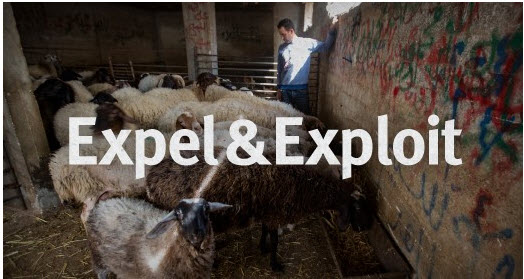A new report published last week by B’Tselem tells the history of the process of fragmentation imposed on Palestinian rural land in the West Bank through a case study of three villages in the Nablus District – ‘Azmut, Deir al-Hatab and Salem. What these communities have experienced since 1980, when Israel established the Elon Moreh settlement nearby, is but one illustration of broader developments taking place throughout the West Bank. Their story is similar to that of hundreds of Palestinian communities in the occupied territories on whose lands Israeli settlements were established.
Like many Palestinian villages, ‘Azmut, Deir al-Hatab and Salem developed in keeping with the geographical features of the area. Farmland, pasture and natural water sources serves as the mainstays of the local economy and as the basis for the formation of an entire culture that ties the residents deeply to their surroundings. The villagers employed mostly traditional dryland farming, cultivating olives and fruit trees, legumes and grains. They also raised livestock, relying on natural pasture stretching across the hilly expanses of al-Jabal al-Kbir (literally: The Big Mountain) and the surrounding valleys. For hundreds of years, the villagers largely subsisted off farming and shepherding.
Since the 1967 occupation, Israel has employed various measures – official and otherwise – to cut off the villagers from their land and hand it over to settlers. The first step was the 1980 establishment of the Elon Moreh settlement on 127.8 hectares (1,278 dunams) of village land already registered as government property under the pre-1967 Jordanian rule. Just two years later, the Commander of Judea and Samaria declared a nature reserve on some of the remaining land west of the settlement. This resulted in the creation of an area, far exceeding that of the settlement’s jurisdiction, where Palestinians must receive Israeli permission for carrying out any development, construction, new cultivation, or pasturing livestock. In 1987, 170 hectares of the nature reserve were declared “state land”, and an illegal settlement outpost erected there in 1998.
According to the new report: “The impact that the West Bank settlements have on the lives of Palestinian residents far exceeds the land seized for the actual building of the settlements: Additional lands were expropriated for paving hundreds of kilometers of bypass roads; checkpoints and other measures that restrict only Palestinian movement have been situated based on the location of the settlements; access by Palestinian owners to many of their agricultural lands – within the areas of settlements and outside them – has been effectively blocked; and the winding route of the Separation Barrier – which severely violates the rights of Palestinians living nearby – has been situated deep inside the West Bank, mainly in order to keep as many settlements as possible on its western (Israeli) side, along with extensive tracts that Israel has designated for future expansion of those communities.”



